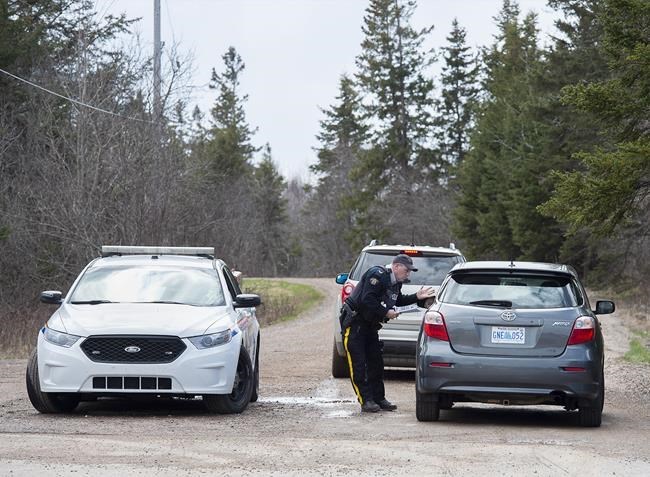HALIFAX — The RCMP says that three of the four semi-automatic weapons used by a gunman during last month's mass shooting in Nova Scotia are believed to have come from the United States, but the agency continues to withhold some key details.
A news release issued Monday doesn't give the model or calibre of two rifles and two handguns that the gunman had when he started the rampage in Portapique, a small community west of Truro.
The investigators said in the release one semi-automatic weapon was obtained by the killer in Canada, but they didn't specify whether it was a rifle or a handgun.
The Mounties say the four guns were in Gabriel Wortman's possession when he killed 13 people in Portapique on the night of April 18 and nine more people in other towns the next day.
The release also says the 51-year-old denturist used an accelerant to set fire to buildings, noting he had a significant supply of gasoline at his Portapique home.
Observers of the gun control issue in Canada say details on what firearms are used are key to informed discussion, as debate continues over the Liberals' recent announcement of a ban on 1,500 military-style assault firearms would prevent similar incidents.
Public Safety Minister Bill Blair confirmed in an email sent by his staff that the two semi-automatic rifles used in the mass shooting are now on the prohibited list.
He has left it to the RCMP to indicate the model and calibre. But the RCMP said Monday it needs to keep those details confidential as its investigation is ongoing.
The Mounties also said the matter of who brought the weapons used into Canada is still being jointly investigated with the Canada Border Services Agency.
Andrew Somerset, author of "Arms: the Culture and Credo of the Gun," said in an interview there is little evidence the Liberal gun control measures would prevent a similar mass shooting.
"Honestly, what this really shows us is that a lot of Canada's problem with guns actually originates in the United States," he wrote in an email.
"The lack of regulation in the United States, and the dominant gun culture of the United States, not only limits what we can reasonably do in terms of legislation in Canada ... but also creates this ongoing hazard for Canadians."
Blair has defended the move against assault-style rifles as a first step in the government's overall gun-control plan and has said he'll introduce legislation that creates a new framework for classification to ensure federal intentions can't be easily overridden.
He's said the current classification regime permitted manufacturers to bring in a number of different variants that got around the restrictions.
Blake Brown, a Saint Mary's University history professor and author of "Arming and Disarming: A History of Gun Control in Canada," said in an email he believes the Liberal prohibition on some assault-style guns is a useful response to the mass shooting.
"I think it is reasonable to believe that limiting the domestic legal supply of some semi-automatic firearms, combined with reducing the flow of illegal guns from the United States, could in the long term reduce the likelihood of mass shooting events in Canada," he said in an email.
A media consortium is currently before the Nova Scotia courts attempting to gain more information about the details of the mass shooting through the release of search warrants that have been carried out.
On Monday, another hearing was set for May 19, when David Coles, the lawyer for the media consortium, says it's expected that redacted copies of some of the warrants would be received by the judge.
Meanwhile, in Monday's RCMP release, investigators also say they have identified the supplier of materials used to create the RCMP decals that were on the gunman's replica patrol car.
They said the decals were created without the permission of the business owner, and that the business is co-operating with police in the investigation.
In addition, the RCMP says it has specialists conducting a psychological autopsy of the gunman, with the goal of gaining insight into why he committed the murders.
His victims included an RCMP officer, two nurses, two correctional officers, a family of three, a teacher and some of his neighbours in Portapique.
A Mountie fatally shot the gunman at a gas station in Enfield, N.S., about 90 kilometres south of Portapique on the morning of April 19.
This report by The Canadian Press was first published May 11, 2020.
Michael Tutton, The Canadian Press
